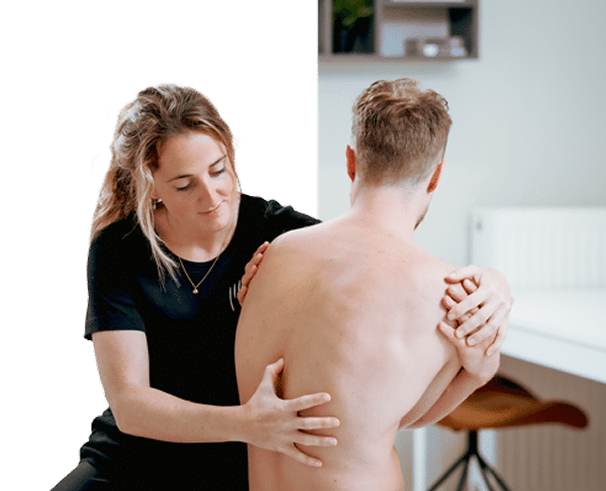What are headaches
Headaches are discomforts in and around the head, neck and muscles of the shoulder girdle and jaw. You may feel pain locally on the skull, at the back of the head or between the shoulder blades with radiation to the head. Sometimes it is a tension headache that feels like a band around the head. Sometimes cavities in the head play along with colds or allergies. Dizziness and a light feeling in the head can be associated with pressure in the head and dizziness caused by muscle tension, breathing or irritation from the neck and upper back.
Symptoms of headaches
- Pain on top of head or pain back of head, sometimes a nagging band around headache headache
- Pressure on head or dizzy pressure on head, lightheaded when standing up
- Stabbing pain in head right or left, stitches in head and ear or stitches side of head
- Sore spot on head not bumped, sensitive when touching muscles on head and neck
- Unable to sleep due to restlessness in head and feeling crowded in your head
- Complaints around the cavities head with oppressive feeling when stooping or coughing
Recognize these signs. Get your symptoms assessed early. Starting early accelerates recovery.
Causes and risk factors
Prolonged screen work with hunched shoulders and few breaks. Muscle tension in neck and upper back due to stress and shallow breathing. Restlessness in the head that makes you sleep worse and more sensitive to stimuli. Wrong pillow height or pillow for the head that does not support your neck. Jaw tension from clenching or grinding teeth. Nasal sinus problems that cause pressure. Rarer causes that do not involve physical therapy such as a cyst in head, cyst in head, water in head or other neurological conditions. When in doubt, we refer and a physician may request an assessment or mri scan of head when appropriate.
What you can do yourself
- Change your posture every half hour and consciously lower your shoulders
- Exhale gently and lower ribs to release tension
- Use heat on neck and upper back and then move lightly
- Choose a pillow head that keeps your neck neutral and sleep on your side or back
- Plan short walking moments and look away from your screen following the twenty twenty rule
- Do pressures in the head get worse or are you often light-headed when getting up. Schedule an intake
Exercises that help
- Shoulder blade activationSitup straight. Lightly pull your shoulder blades down and together. Hold for three counts. Relax. Ten repetitions.
- Neck rotation and side flexion within pain limitTurnslowly left and right. Bend ear to shoulder without forcing. Ten repetitions per direction.
- Upper back mobility over rolled towelLaythe roll under the middle back. Stretch gently over the roll and exhale. Ten repetitions.
- Chin retractionSoftlyretract chin as if making a double chin. Hold for two counts. Repeat ten times for better neck position.
These stretches reduce cramped upper back muscles and reduce pressure on head. Keep the pace steady and breathe through.
Scalp and skin
Sometimes complaints lie more with the scalp. Eczema on head or eczema on head gives itching and sensitivity. Psoriasis head can cause scaling and tightness. Warts on head or warts on head belong to the family doctor or dermatologist. Physical therapy then focuses on tension, posture and comfort but does not treat the skin directly.
Research and treatment at The Physio Man
We start with an intake and listen to your story. We review posture, breathing and tension in muscles of the head, neck and shoulder girdle. We test mobility of vertebrae and ribs, jaw tension and sensitivity of muscle attachments. This is how we determine what triggers your headaches.
A treatment program usually consists of
- Exercise therapy for mobility, strength and coordination of neck and upper back
- Breath and tension regulation to reduce pressure in the head
- Mobilizations and soft tissue techniques for neck, rib and jaw as needed
- Work and sleep posture advice including choice of pillow for the head
- Home program with measurable milestones so you stay in control
In case of alarm symptoms or doubt about causes outside our domain, we will involve your family doctor. Medical imaging such as an mri scan of head is requested only through the doctor.
When immediate help is needed
- Severe new headache that comes on in seconds or is accompanied by fever, neck stiffness, speech or vision disorders
- Headache with failure, loss of strength or persistent confusion
- Complaints after a fall on the head with persistent nausea or drowsiness
- Unexplained neurological complaints or rapidly increasing pressure in the head
In these situations, contact your doctor or the family doctor’s office immediately.
Frequently Asked Questions
Why does it feel like there’s a band around my head
This often fits with tension headaches. Muscles in the head, neck and shoulder girdle hold too much tension. With breath regulation, posture and targeted exercises, the pressure decreases and the band feeling disappears step by step.
What does a sore spot on my head mean without bumping
This is usually a local muscle tension or tender attachment. Sometimes the muscles of the head and neck play together. We look for the source and treat with gentle mobilization and home exercises.
Does another pillow help with headaches
An appropriate pillow supports the natural curvature of your neck. Too high or too low gives extra pressure and can trigger pain in the neck and upper back with headaches. We will advise you on size and material.
Do I worry about dizziness and pressure in the head
Dizzy pressure on head often comes from tension, breathing and neck tension. If it becomes more severe, comes double vision, passing out or vomiting, or you are light-headed when standing up with fainting. If so, contact your doctor.
Does an mri scan make sense for persistent headaches
Only when there is evidence of disorders outside the musculoskeletal system. In those cases, your primary care physician refers. For most headaches, a targeted exercise and posture plan helps better than imaging.
Your next step
Don’t keep walking around with pressure, stitches or tension in your head. With a clear diagnosis and a smart plan, you’ll regain peace of mind and confidence in moving and sleeping.
Make an appointment at The Physio Man now and work with us to achieve a calm, strong and complaint-free head and neck.
Share this article:


